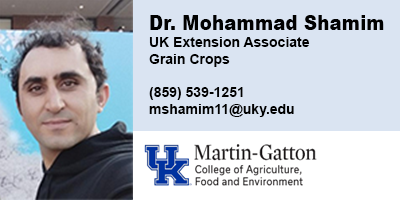How Soybeans Respond to Drought Stress: Insights from 2024's Dry Spell
How Soybeans Respond to Drought Stress: Insights from 2024's Dry Spell
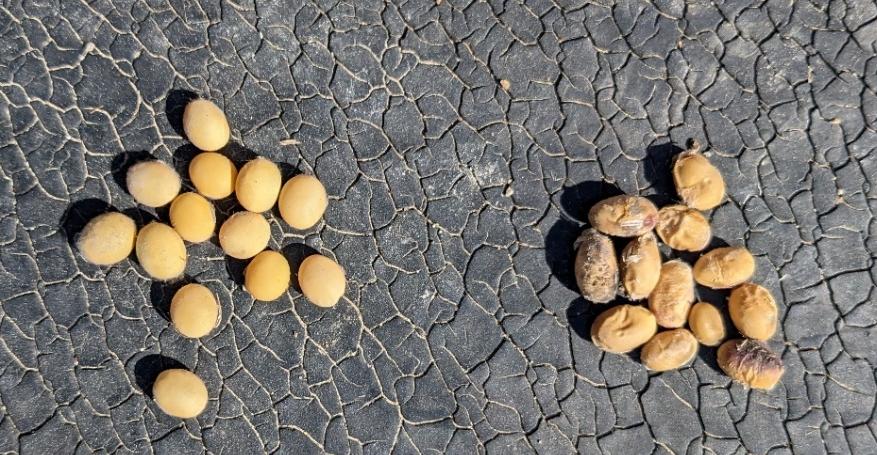
Drought or moisture stress is one of the most critical factors affecting crop yield. A vivid reminder of this was the dry spell of August 2024, where a prolonged lack of rainfall hit the soybean crop during one of its most vulnerable growth periods of seed filling, leading to shriveled, malformed seeds, and in many cases, seed abortion and reductions in yield.
In this article, we explore both short- and long-term coping mechanisms of soybean to drought stress, focusing on how these responses vary across growth stages.
Soybean plants absorb water through their roots and transport it upward through xylem tissues to the leaves, where it eventually evaporates into the atmosphere, a process known as transpiration. This upward movement is driven by atmospheric demand for water, which is larger when the surrounding air is dry.
At the heart of this system are stomata, tiny pores located mostly on the underside of leaves. Water vapor diffuses out of the leaf through the stomata (transpiration) and carbon dioxide (CO₂), a key ingredient for photosynthesis diffuses into the leaf. Each stoma is controlled by guard cells that open and close based on environmental signals. The number, size, and shape of stomata vary across soybean genotypes and growing environments. For instance, U.S. soybean varieties have been shown to have more stomata per unit leaf area compared to Japanese and other Asian varieties, which may partly explain differences in drought response and productivity.
Often, drought isn't just about dry soil, it’s about a dry atmosphere. When the air has low humidity, it creates stronger atmospheric demand causing water to evaporate more rapidly from leaves. If the roots cannot supply water fast enough to match this loss, the plant begins to close its stomata to conserve moisture. But this self-defense mechanism comes at a cost: closing stomata restricts CO₂ intake, which in turn slows photosynthesis, the very process that fuels growth, seed development and yield.
Not all drought responses are biochemical. Some are morphological and immediate. If you've walked through a soybean field around noon or early afternoon, you may have noticed leaves standing upright, reflecting a silvery tone. This is para-heliotropism, a short-term drought response where leaves reorient vertically to reduce exposure to intense sunlight and heat. This response reduces radiation absorption during peak stress hours, helps avoid photodamage and overheating. It is often triggered by atmospheric dryness even when soil moisture is adequate to drive photosynthesis under normal conditions.
When soybean experiences drought stress during early vegetative stages, both stem elongation and leaf expansion are significantly reduced, resulting in smaller overall leaf area compared to well-watered conditions. However, if the drought is relieved early, through rainfall or irrigation, soybean plants can rapidly resume growth, often accelerating stem elongation and leaf expansion to compensate for earlier setbacks. This ability to recover explains why drought during vegetative stages is generally less or not damaging to yield compared to stress during reproductive stages. Nonetheless, when a dry spell coincides with reproductive stages (growth stages R1 toR5) soybean plants face a double burden:
- Photosynthesis drops due to closed stomata and perhaps smaller leaf area if stress occurred earlier during vegetative growth
- Biological nitrogen fixation also declines, because both processes are tightly linked.
As a result, developing seeds receive fewer carbohydrates and less nitrogen, leading to shriveled seeds, reduced seed weight, and yield loss (Figure 1, 2, 3).
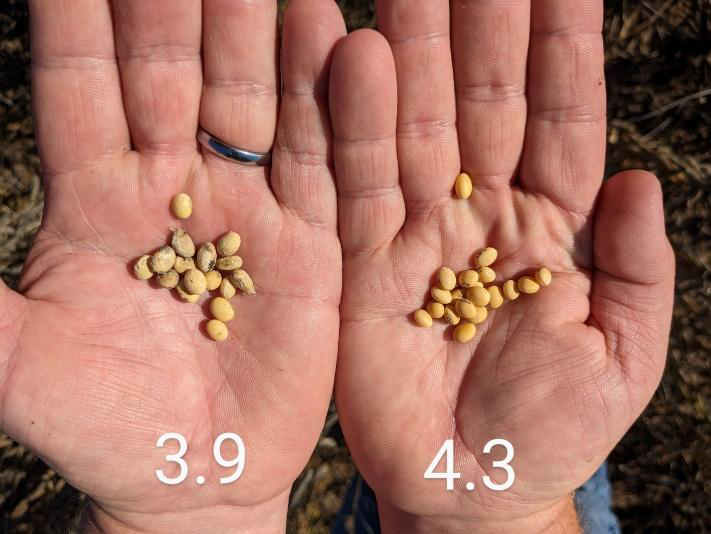
Figure 1: Quality of soybean seed in two maturity groups planted side-by-side in the same field. The early maturity group experienced seed filling during the August drought of 2024, resulting in poorer seed quality, while the late group escaped the stress.
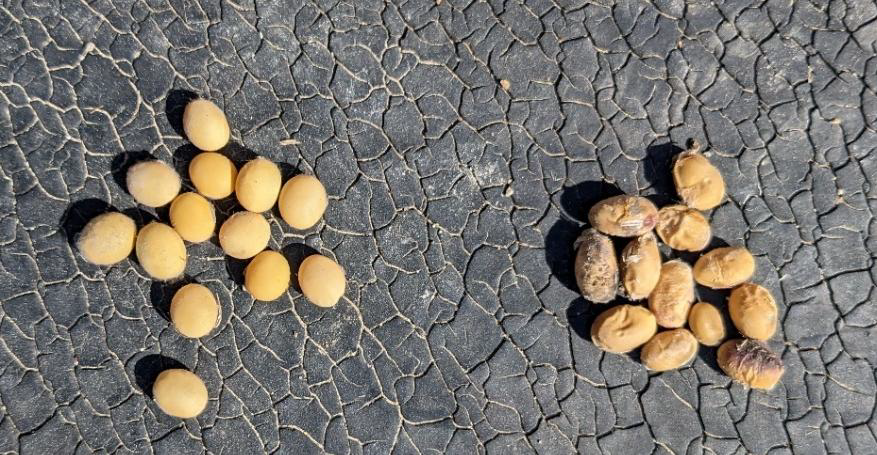
Figure 2: The same variety planted three weeks apart in the same field. Late-planted soybeans suffered less damage due to a shift in the timing of reproductive growth.
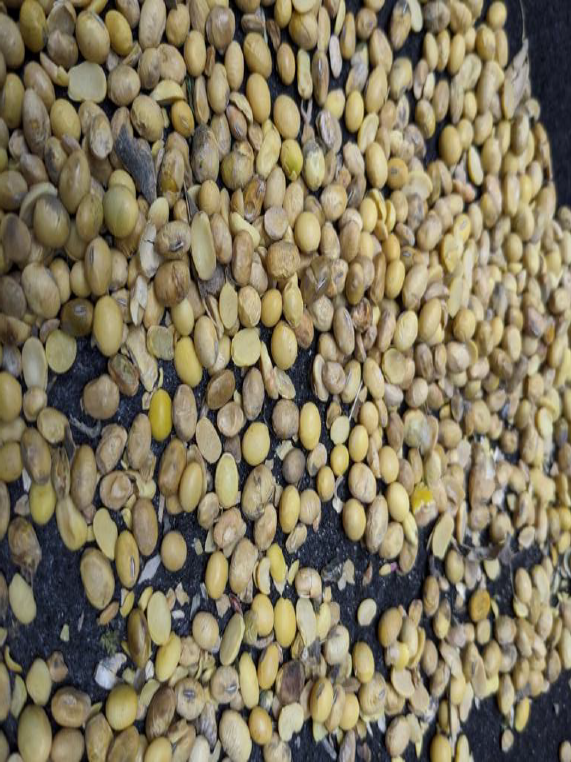
Figure 3: Seeds from drought-affected fields show widespread shriveling and poor fill.
Why This Matters: Managing for Drought Uncertainty
At first glance, the images might suggest that only late maturity groups or late planting can escape drought stress. While that may be true in this specific case, drought can occur at any stage and affect any maturity group. We cannot control drought stress in most of Kentucky’s soybean fields, but we can deploy some management practices to reduce risk. Diversifying planting dates, and/or maturity groups is an option to mitigate against potential drought stress. This staggers the risk and increases the chance that at least part of the crop will avoid the worst of the stress. If you have access to irrigation, applying sufficient water at or after R3 growth stage (beginning pod development) will ensure competitive yield.
Sources:
Haworth M, Marino G, Loreto F, Centritto M. Integrating stomatal physiology and morphology: evolution of stomatal control and development of future crops. Oecologia. 2021 Dec;197(4):867-883. doi: 10.1007/s00442-021-04857-3. Epub 2021 Jan 30. PMID: 33515295; PMCID: PMC8591009.
Hoogenboom, G., Peterson, C. M., & Huck, M. G. (1987). Shoot Growth Rate of Soybean as Affected by Drought Stress 1 . Agronomy Journal, 79(4), 598–607. https://doi.org/10.2134/agronj1987.00021962007900040003x
Irmak, S., Specht, J. E., Odhiambo, L. O., Rees, J. M., & Cassman, K. G. (2014). Soybean yield, evapotranspiration, water productivity, and soil water extraction response to subsurface drip irrigation and fertigation. Transactions of the ASABE, 57(3). https://doi.org/10.13031/trans.57.10085
Tanaka, Y., Fujii, K., adn Shiraiwa T. 2010. Variability of Leaf Morphology and Stomatal Conductance in Soybean [Glycine max (L.) Merr.] Cultivars. Crop Science, 50(6): 2525-2532.
Citation: Shamim, M.J., 2025. How Soybeans Respond to Drought Stress: Insights from 2024's Dry Spell. Kentucky Field Crops News, Vol 1, Issue 7. University of Kentucky, July 11, 2025.
